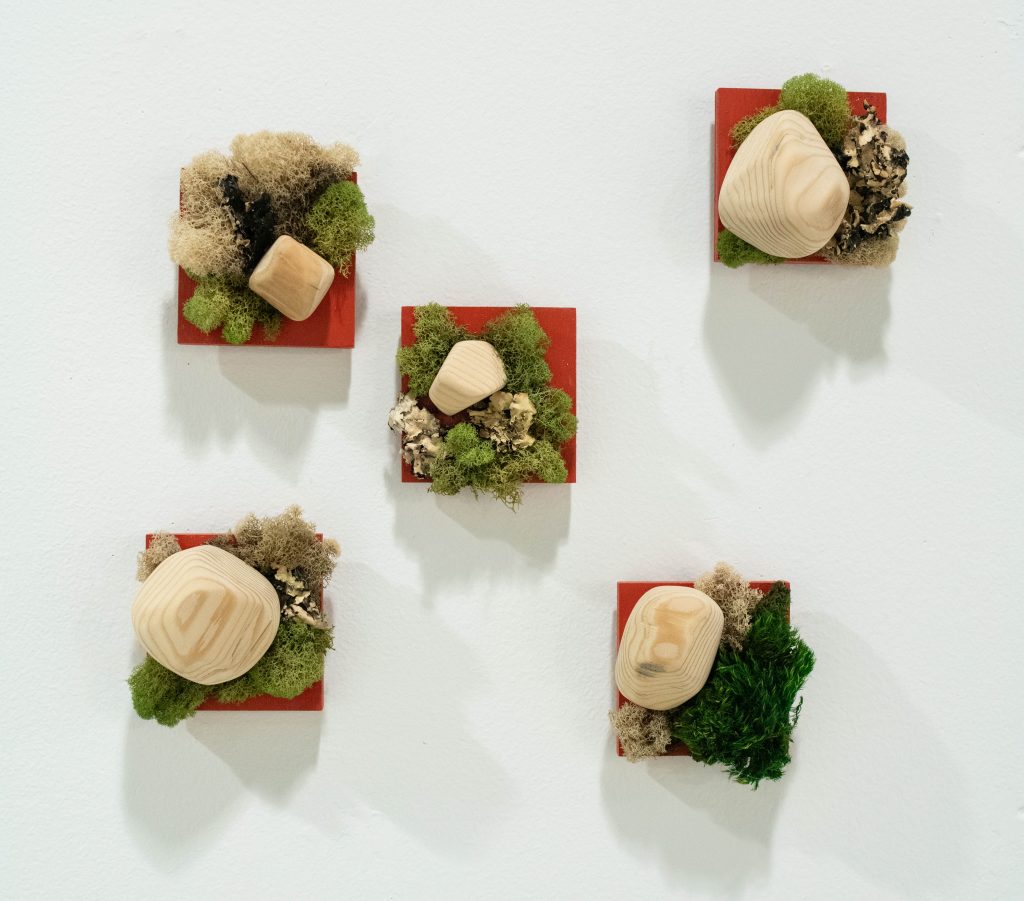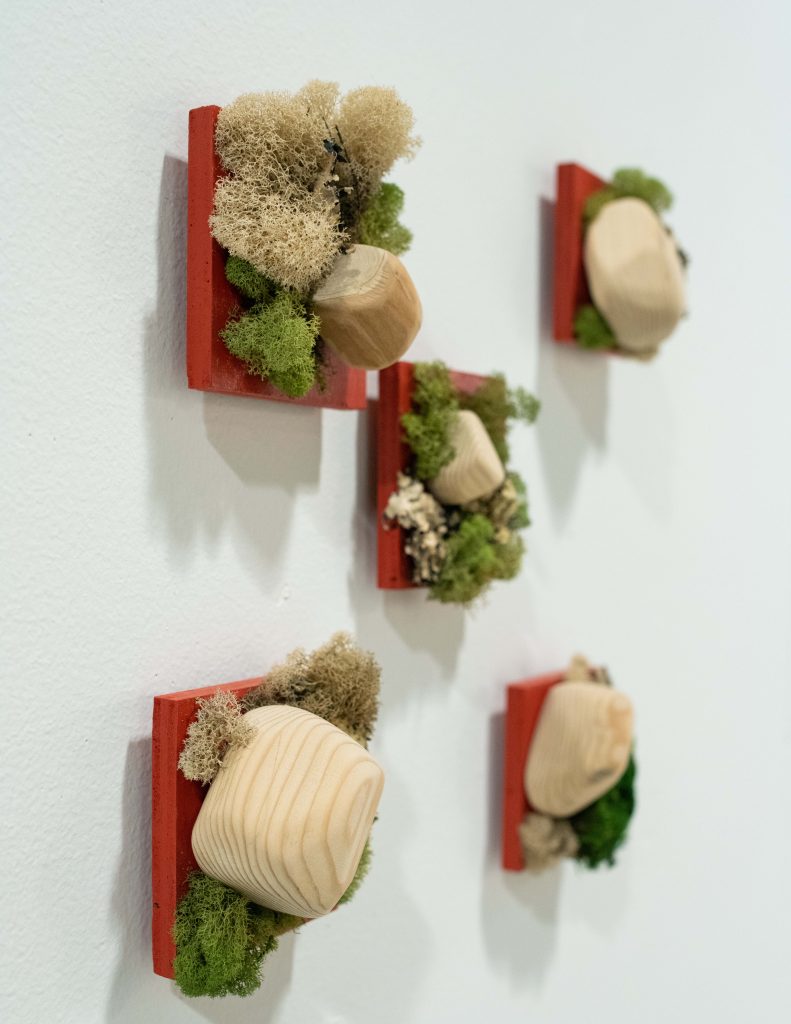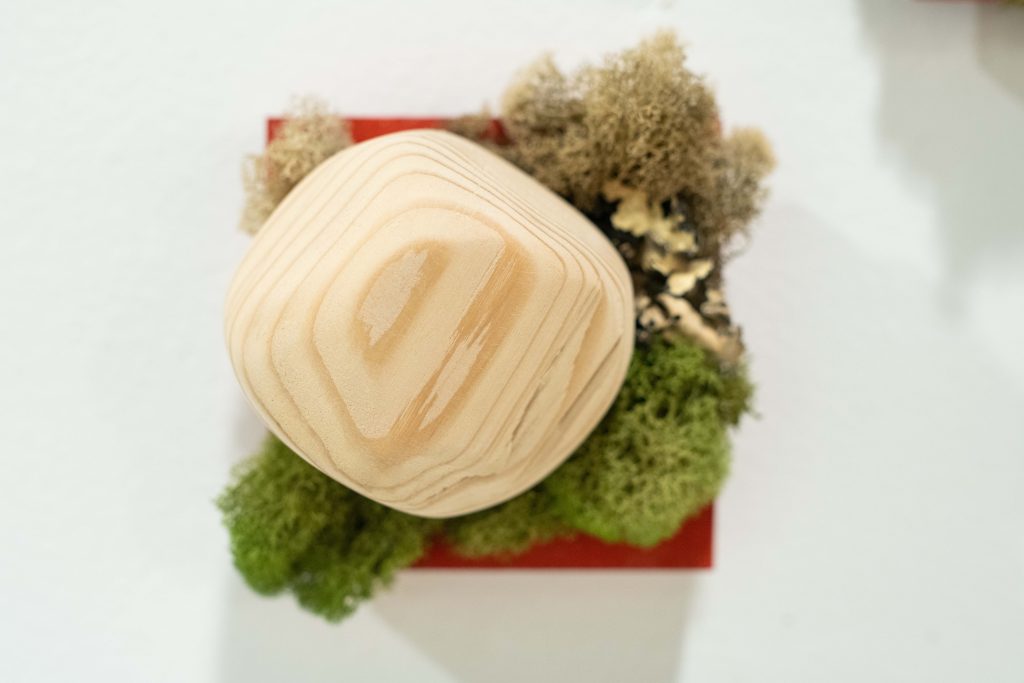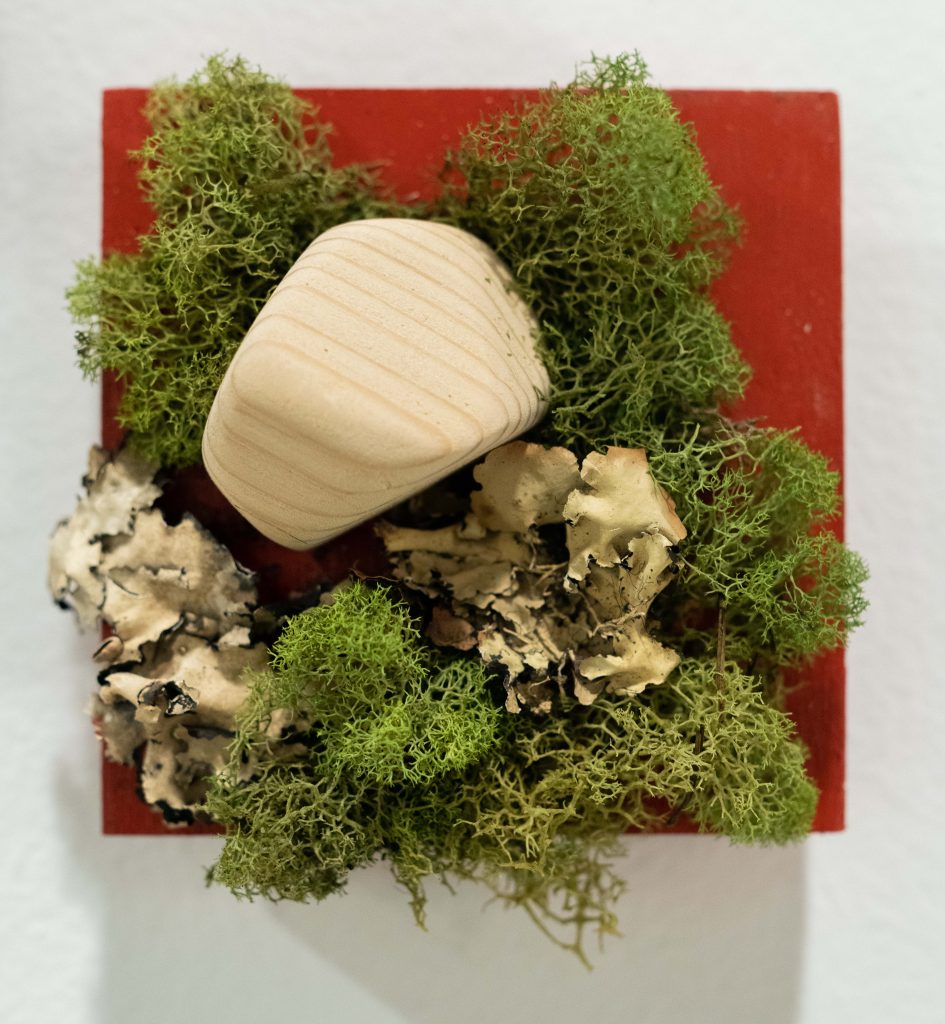Beyond the Riverbed
By Jenna Davenport
Artist Statement
2022
Acrylic paint, wood, artificial moss
17”x16”x1.5”
Beyond the Riverbed explores the unseen displacement that occurred in Maine’s natural history. Maine was once the lumber capital of the world, but with that came detrimental effects on the natural environment. Log drives were essential to the transportation of trees to be made into lumber. Two main points of environmental concern with log drives were deforestation and the effects of dynamite used to break up stuck logs.
While deforestation and the effects of dynamite are the main environmental issues associated with log drives, the impact is far more complex. While some stuck logs were blown with dynamite, sunken logs were left to live on the bottom of the river. These sunken logs created a chain reaction of issues, resulting in the decline of the brook trout population, as noted by Daniel Michor in his dissertation titled People in Nature: Environmental History of the Kennebec River. This predictably led to a decline in predatory species and an increase in brook trout prey. Although the brook trout population decline did not directly and significantly impact the daily lives of Mainers and is not the most notable result of the lumber industry’s actions, it was a significant example of how our actions have consequences in regards to ecology and the processes of the natural world.
Lumber and artificial moss were used to create a patchwork riverbed complete with wooden river rocks. Peach-colored acrylic paint is representative of the underbelly of brook trout – pointing directly to the unfortunate effects of our state’s past decisions. Manmade materials constructing a natural environment confronts the viewer with both the past and present of the lumber industry and implores viewers to question their own relationship with the natural land.






